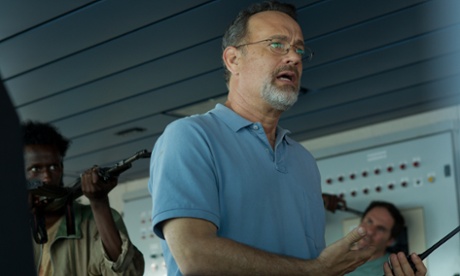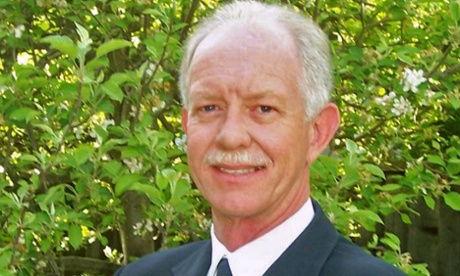The new film by Clint Eastwood, Sully: Miracle on the Hudson, was made as an Imax movie, allowing you to share the near-death experience of hundreds of people on a screen as high as five double-decker buses. The Sully of the title is Chesley “Sully” Sullenberger, a veteran US Airlines pilot played by Tom Hanks. The miracle is the real-life forced water landing he made in New York after Canada geese struck his plane on the climb out of LaGuardia in 2009. So we see the geese, albeit fleetingly. We see the engines, lost in flames. And we see the lurching descent to the river, from the sky, from the cockpit and from inside the cabin, jolting and shuddering as 155 passengers weep and scream and send wrenching farewell texts. Oh, and did I mention? All as big as five double-decker buses.
As with most Clint Eastwood movies, Sully is made with impeccable craft. But the Imax super-sizing isn’t there to showcase the mid-range conference rooms a chunk of it takes place in. It is to help us feel second by palpitating second what it must really be like to cower onboard a packed Airbus A320 careening over midtown Manhattan. Add it to the list of human endeavours we would find hard to explain to aliens.
Sully is simply the next logical step in the long line of movies portraying with ever greater grim authenticity the waking nightmare of a plane going down. The weirdness of it feels especially marked in a week when a real flight and 75 real lives were lost in La Unión, Colombia. That much is a sad accident of timing. Sully isn’t a cruel film. But it is the latest entry in a crowded sub-genre.
Where to start with milestones? The hideous slam into a mountaintop that begins Alive, the true story of the 1972 crash involving a Uruguayan rugby team whose members then endured two months marooned in the Andes? Or the disaster that opens Peter Weir’s Fearless, with Jeff Bridges smiling serenely against a gaping fuselage, set to the soft pulse of Górecki’s Symphony No 3. Tom Hanks was again the star in Cast Away, this time as the passenger of a cargo plane tipped with ghastly realism into the south Pacific. Most recently, Flight gave us Denzel Washington’s hungover pilot deciding in the middle of a nosedive that the only way to save his passenger jet was to flip it upside down, resulting in a masterclass of vomiting, wailing and prayer. And, yes, there are many more.
It is, at heart, a numbers game. The logic is not so different from a certain kind of terrorism, threatening a cargo of human souls with an awful sense of spectacle thrown in. Had movies been around for the early 19th century, they would have offered endless doomed steam engines. Now in the age of mass air travel, the plane crash is one of the last great levellers. Business class provides no shield from fate or Canada geese (in fact, studies suggest passengers at the front of a plane have a slightly greater chance of dying in a crash, for reasons of brute physics). So the plane crash becomes a rare prize to studio executives – the event so universally relateable even they can relate to it.
Or the fear of it at least. The odds of dying in a plane crash stand at somewhere close to one in 4.7m – which many people still feel is asking for trouble. Just stepping on to a plane can seem wildly counterintuitive, much like paying to see at the movies exactly what we spend our time in the air trying desperately not to imagine. Maybe, like horror films, it is catharsis, a healthy confrontation of our dread. And yet you won’t find Alive or Flight on many airline entertainment menus.
This is probably where I should say that I have a fear of flying. For several years, I stopped flying altogether. In the end, I went on a course at Gatwick, where 100 of us were coaxed into the air by a British Airways pilot. At the start of the course, a PowerPoint slide showed a plane parked on a runway. Someone audibly whimpered. Much later, after countless insights into the nature of turbulence and the physical role of the inner ear, he asked if we were reassured. “Unless someone puts a bomb in the luggage,” a voice said from the back. I wonder now if it was a scriptwriter.
The ties between film and flight go deep, the two born in the same era of clanking innovation. In 1895, the Lumière brothers publicly screened moving pictures in Paris. Just eight years later, Orville and Wilbur Wright briefly got the Flyer 1 aloft in Kill Devil Hills, North Carolina. From there, the new technologies conquered the 20th century. Films were fuelled by mass popularity; flight by the bloody demands of the first world war. Eventually, they dovetailed in the obsessions of Howard Hughes.
Aviation pioneer and production mogul Hughes directed the 1930 epic Hell’s Angels, an action melodrama about sibling fighter pilots. It was a box-office hit, earning back double a vast budget (for then) of $3.8m and establishing a public taste for mid-air derring-do. But success didn’t come cheap. Three pilots died making the film, with Hughes obliged to perform the climactic stunt himself. He crashed.
As commercial air travel grew, so did the appetite for movies about planes in trouble – John Wayne would star in The High and the Mighty (1954), later inspiring the goofery of Airplane! It was the age when something that for all human history had been unthinkable – travel above the clouds – began to verge on the commonplace. Still, every successful landing was a small triumph for science and progress. On screen, to save a flight was to save the onward march of mankind.
For Hughes, there were more crashes. The most notorious was the 1946 test flight of a military spy plane launched from his airfield at Culver City, California, close to the home of MGM and the soundstages where they shot The Wizard of Oz. High over Los Angeles, Hughes found himself unable to stop the plane going into an uncontrolled descent that ended in the decapitation of a Beverly Hills mansion. The crash turned up as an extended scene in The Aviator, Martin Scorsese’s biopic of Hughes, the director using all the va-va-voom you would expect as Leonardo Di Caprio hurtled to earth. The real Hughes was left with third-degree burns and his heart forced into the right side of his chest by the impact.
For any director, you can see how a professional life spent orchestrating moving parts could trigger a fascination with planes. In Hughes, it was pathological. Robert Zemeckis, who helped create two of the queasiest plane crashes in cinema with both Cast Away and Flight, is less troubled. Asked in 2012 if he had any advice for nervous flyers, he replied: “Take some flying lessons.”
But after spending half my life interviewing directors, I’ve lost count of the number who dislike flying. Lars von Trier is famously phobic, the stuntishness of once arriving at the Cannes festival in a camper van a response to a genuine problem. I met Wes Anderson in 1999 on his first press trip to Europe – a journey he had to make on the QE2. And Scorsese? A persistently bad flyer, who based the scenes of addled mayhem in The Wolf of Wall Street on the time he took the Quaaludes prescribed to help him get on a plane.
Directing films is about control, and the more control the director likes – von Trier, Anderson and Scorsese, precision instruments all – the greater the unease with delegated judgement, made worse by an urge to storify each mid-air creak. The young Stanley Kubrick got his pilot’s licence, but later quit all forms of flying, darkly citing “compromised safety margins in commercial aviation”.
During my own exile from air travel, I met a woman whose husband could fly only with his eyes shut tight and on the condition no one spoke to him. “Shh,” she would glower if they did. “He’s flying the plane.” But, for most of us, flight is one giant handover of control, accepting a minor role in a narrative where our only choice becomes chicken or vegetarian. To fly is to be communal and captive. Not unlike a movie audience.
True, we can walk out of a film, but anything less demands that same acceptance of a series of decisions other people have already made. By the end of Hughes’ life, picked bare by mental illness and chronic pain from the 1946 crash, he had retreated to a Las Vegas hotel and round-the-clock screenings of cold-war clunker Ice Station Zebra.
From my perspective as a nervous flyer who sees too many films, the overlaps pile up. A certain suspension of disbelief is required for both (listen to how quiet everything gets at takeoff, as if watching an opening scene). In the cabin of a plane with the cockpit door closed, what we see is as stage-managed as if directed by Kubrick or Anderson. Eventually, there might be an actual movie, the better to lull and distract. But the veneer is thin – once turbulence strikes, the in-flight entertainment is switched off, returning us to clammy reality.
Wise directors know when to stop. In United 93, Paul Greengrass’ forensic account of the 9/11 flight whose passengers resisted the hijackers, the film cuts to black as the plane starts to dive. In fiction, the problem can be tempting fate. Last year’s excellent Argentine comedy Wild Tales featured a pilot gathering his unwitting enemies on a revenge flight. Its British release was marred when, three days before, Germanwings co-pilot Andreas Lubitz locked the pilot out of the cockpit and crashed their plane into the Alps, killing all 144 passengers and six crew.
But mostly, the thing about plane-crash movies is they come with happy endings, or at least the promise of one. Even Alive ends on a note of uplift, and that’s a film in which several characters are victims of cannibalism.
And from Hollywood, the lesson is to ignore Wild Tales and have faith in pilots. In Flight, the captain was a genius, if a flawed, bleary, coked-up one. But in Sully, the only flaws lie with meddling bureaucrats, the saintly aura heightened by the casting of Hanks – everyman hero, America’s dad – as the one man who sees it, gets it, our only chance to save the day. Feel free to make the analogy. The message isn’t subtle. And the giant size of Sully isn’t there just to terrify the viewer – it’s to give our hero a fitting scale. When we fly, we still feel like Icarus, daring the gods. The answer, we are told, is strong leadership. Trust your captain. It will all be fine. Unless someone puts a bomb in the luggage.











